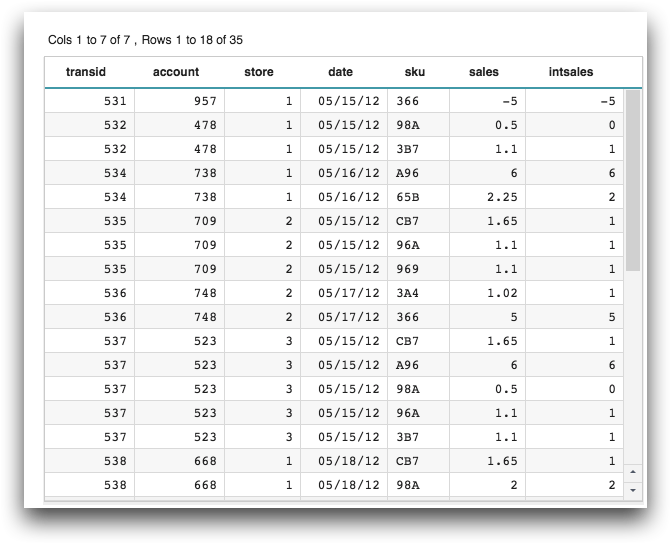int(X)
Returns the largest integer less than or equal to the given value. The result is an integer data type.
Syntax
int(X)Input
| Argument | Type | Description |
|---|---|---|
X |
any simple type | A numeric value (or a numeric value represented as text) A scalar value or the name of a column |
Return Value
Returns an integer value corresponding to the largest integer less than or equal to
X.
If X is a decimal number, the result is the integer part of
X cast to integer data type.
If X is an integer or decimal number
represented as text, it is converted to the corresponding integer or decimal
number. If the
number is a decimal number, the result is the integer portion cast to integer data type.
If X is a value that cannot be converted to a numeric value or is N/A, the
result is N/A.
Sample Usage
X |
int(X) |
|---|---|
| -5.25 | -6 |
| -5.0 | -5 |
| 13 | 13 |
| 5.0 | 5 |
| 4.5 | 4 |
| "3" | 3 |
| "7.25" | 7 |
| "-7.5" | -8 |
| NA | NA |
Example
In this example, the int(X) function returns the largest integer less than
or equal to the given value on the sales column on the
pub.demo.retail.item table.
<base table="pub.demo.retail.item"/> <colord cols="transid, account, store, date, sku, sales"/> <willbe name="intsales" value="int(sales)"/>

